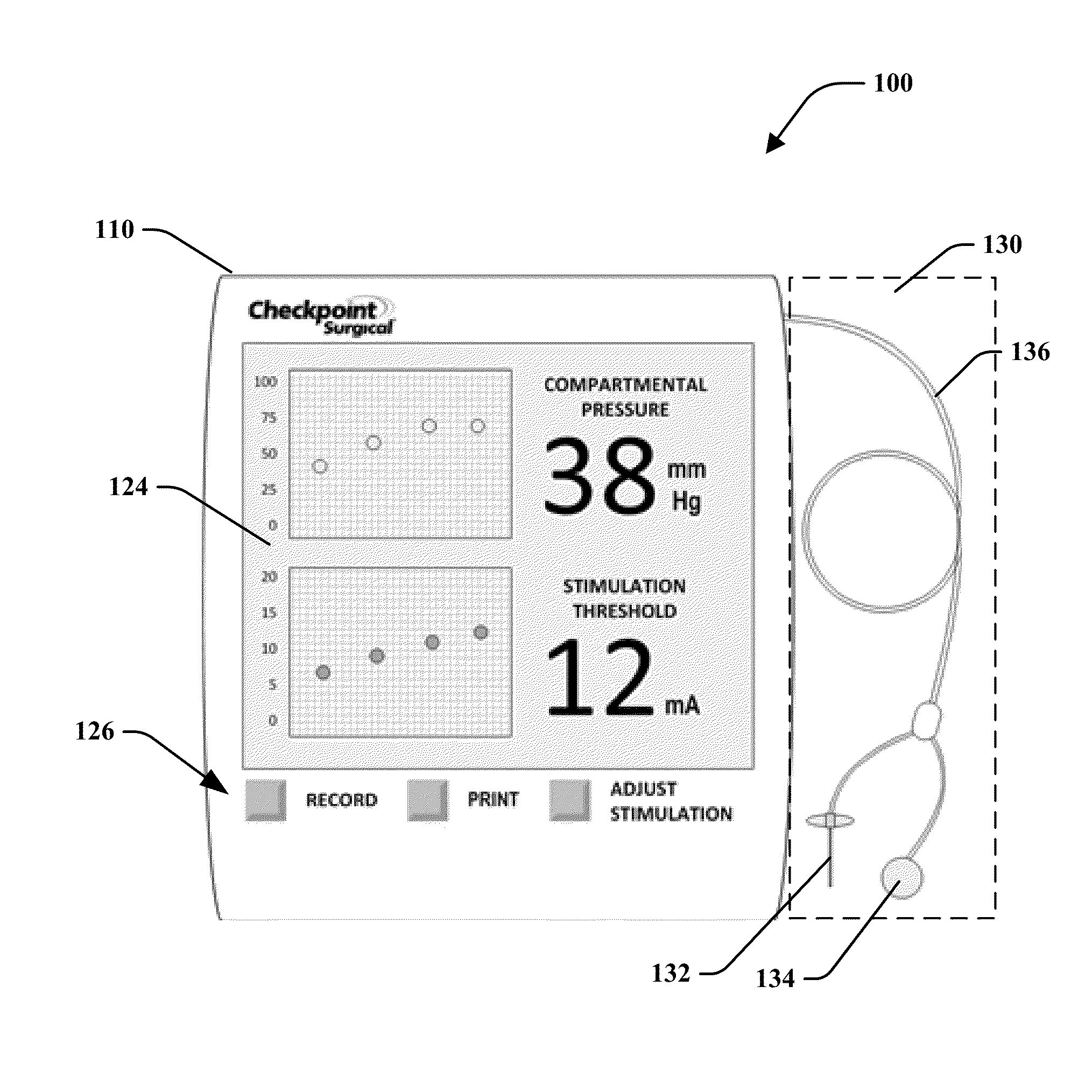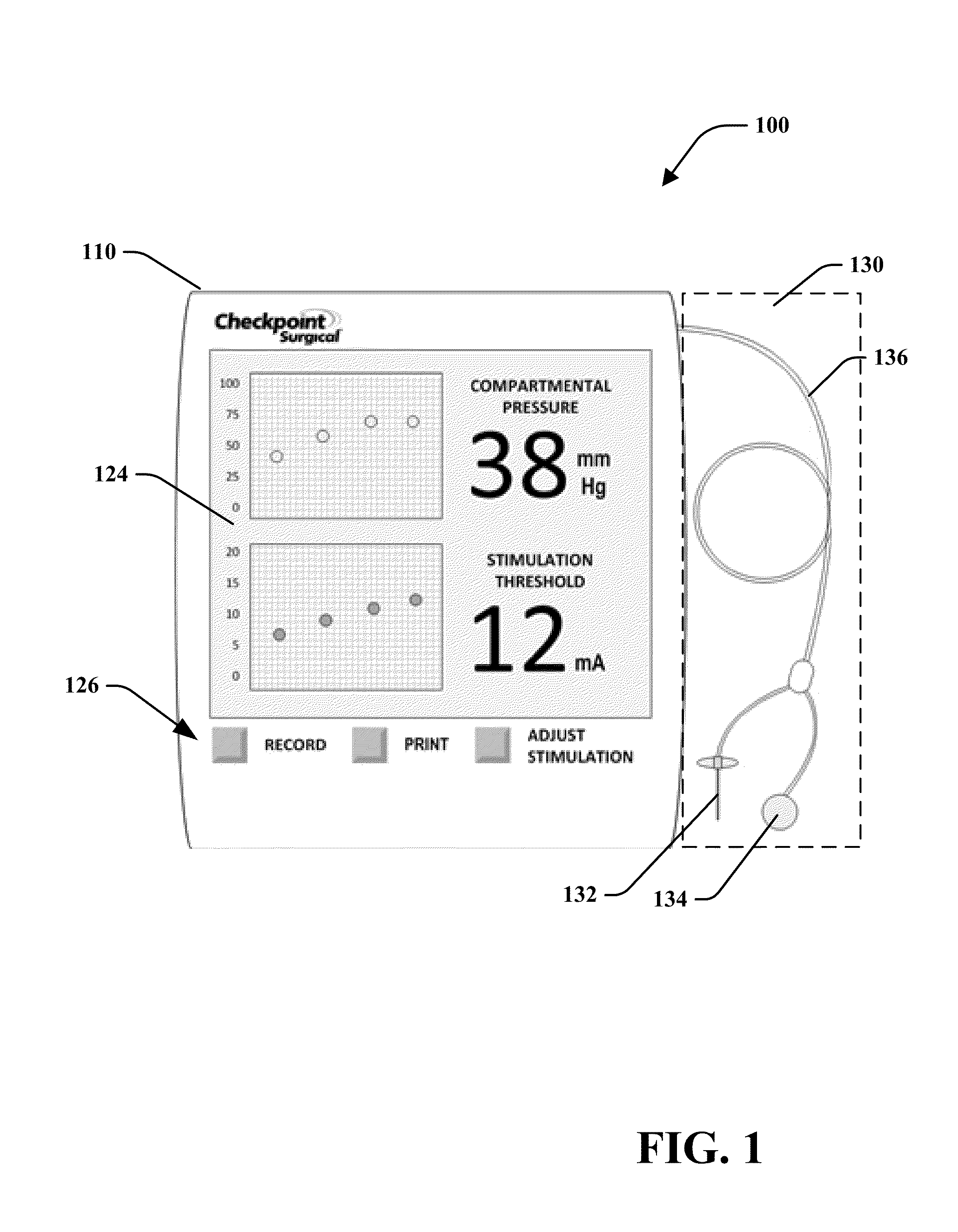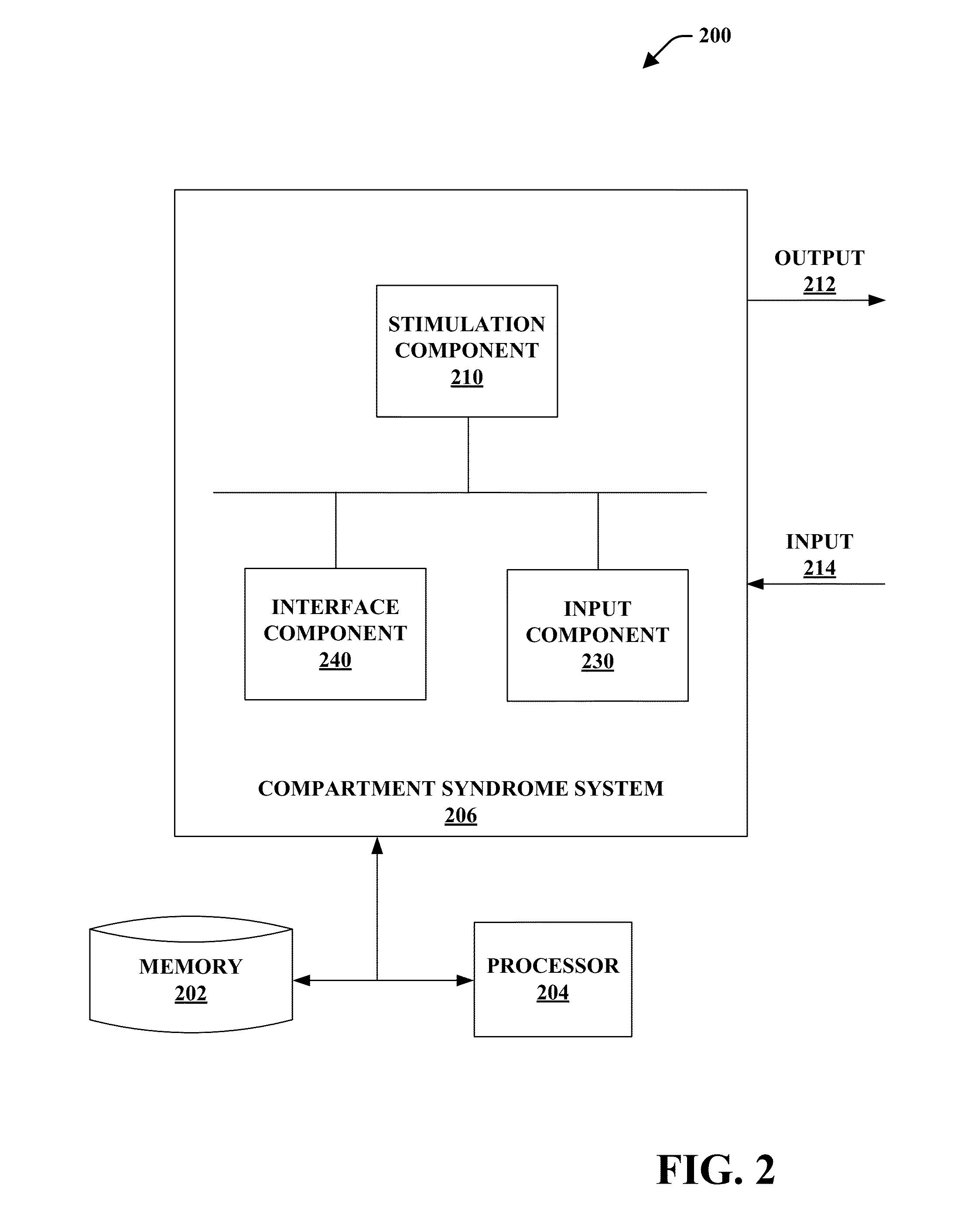Percutaneous stimulation device and method for detecting compartment syndrome
a percutaneous stimulation and compartment syndrome technology, applied in the field of devices and methods for detecting compartment syndrome, can solve the problems of muscle death, catastrophic loss of function, and decrease in circulation, and achieve the effect of more reliabl
- Summary
- Abstract
- Description
- Claims
- Application Information
AI Technical Summary
Benefits of technology
Problems solved by technology
Method used
Image
Examples
example
[0103]An 11-year-old girl sustained a type III supracondylar elbow fracture. The patient underwent closed reduction and internal fixation of the fracture. However, postoperatively she complained of severe and unremitting pain in the arm. The pain was so severe that readmission to the hospital for pain control was necessary and compartment syndrome was considered. Compartment pressures were measured in the dorsal and volar compartments. The pressure was found to be in the range from the high teens to the mid twenties.
[0104]The clinical observation of severe pain and the ambiguous pressure readings indicated that the patient might be a risk for developing compartment syndrome.
[0105]Muscle contractility was measured directly using a stimulator, such as a CHECKPOINT stimulator. Placing the ground in the subcutaneous tissues, an insulated anesthesia block needle was connected to the stimulator and inserted percutaneously in the superficial and deep compartments.
[0106]Good stimulation, as...
PUM
 Login to View More
Login to View More Abstract
Description
Claims
Application Information
 Login to View More
Login to View More - R&D
- Intellectual Property
- Life Sciences
- Materials
- Tech Scout
- Unparalleled Data Quality
- Higher Quality Content
- 60% Fewer Hallucinations
Browse by: Latest US Patents, China's latest patents, Technical Efficacy Thesaurus, Application Domain, Technology Topic, Popular Technical Reports.
© 2025 PatSnap. All rights reserved.Legal|Privacy policy|Modern Slavery Act Transparency Statement|Sitemap|About US| Contact US: help@patsnap.com



